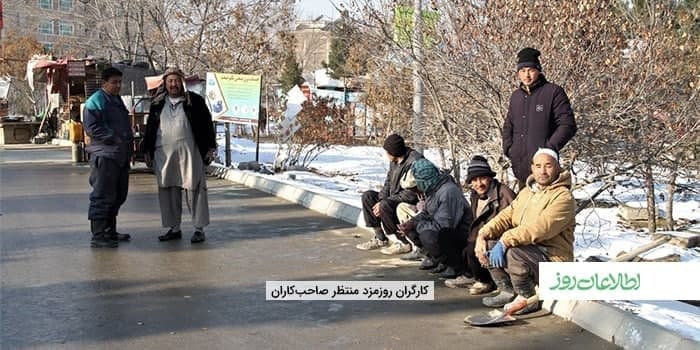Two years ago, Alidad left his home province Ghor to settle in the capital Kabul. What forced him to leave Ghor was extreme poverty. As the only breadwinner of his family, Alidad leaves his rented house every morning in the hope to earn just a living. “I have been jobless for a very long time,” he says, lamenting about unemployment and insecurity.
Alidad is not alone. There are dozens of daily-wagers who stand in many spots of the city, waiting for work. Yahya, 31, says he has not been able to pay the rent of his house for the last three months of the winter.
Insecurity coupled with growing unemployment has put Afghanistan in a bad state. Most daily wagers are willing to work a single day in return for 100 afghanis, $1.30 cents.
Yahya is the only bread-winner of a family of six members. “I once decided to change my line of work and shift into a fruit selling but many people who are in the business advised me not to start,” he told Kabul Now.
In the winter, Alidad says, they use the almond shells to heat their room. “We remove almond shell in return for its shell.”
In July 2020, Assadullah Majboor, chairman of the National Union of Afghanistan Workers and Employees (AMKA), quoting an official figure, said nine million Afghans were jobless.
“One day, I worked from morning to 6:00 PM and received 200 afghanis. I was told that if I am unhappy, there were others who were willing to take the job,” Yahya said. He says that some daily wagers who are in dire need of money work the whole day for 50 afghanis while the minimum wage set for a daily wager is 300 afghanis.
In 2015, President Ashraf Ghani announced that his government was working on a number of programs to create job opportunities for the Afghans.
The 60-year-old Amirdad has spent most of his life working as a daily-wager. He says that he collects plastic and burns it to heat the room where eight people live. For Amirdad living in Kabul is a real challenge. He has to feed eight people in a city with an estimated 5.5 million population and high unemployment rate and growing insecurity.
The Multidimensional Poverty Index published on March 31, 2019, suggested that over half (51.7%) of Afghanistan’s population lived below the poverty line. Aziz Rafiee, a member of the Afghan civil society organization, says the unemployment rate is far higher than the official figures. “More than 80 to 85 percent of the country’s population, particularly those living in major cities, we think, are now living below the poverty line.”
Faiz Mohammad is a daily wager who has to feed his ten-member family. He says that he is in debt to the shopkeepers. “I owe 60,000 afghanis to shopkeepers.”
Mohammad Marouf Qaderi, head of the National Union Workers of Afghanistan, told Kabul Now that a large number of people live in poverty but the seasonal employees are in a worse condition because they work during particular seasons and remained unemployed for the rest of the year.
Suhrab Bahman, the Spokesperson for the Ministry of Economy, confirmed that the unemployment ratio has increased by 35 percent.
“I borrowed money from two of my relatives, 30,000 from one and 40,000 from the other one. They say they will put me in jail if I do not return their money,” Alidad says. The unhappy Alidad said he would never have left his village if he had farmland there.
Growing unemployment is the second largest threat that puts Afghanistan in a risky situation. As the country grapples with an unending war, the majority of Afghanistan’s population find themselves kept in a tough predicament: poverty and war.




